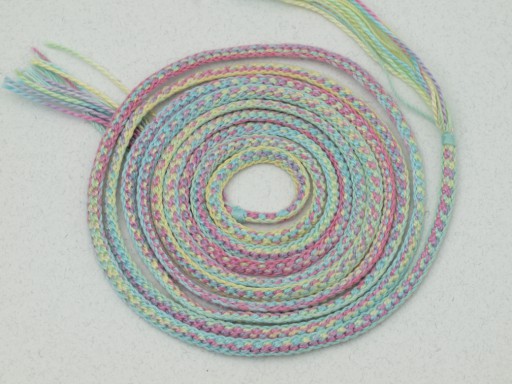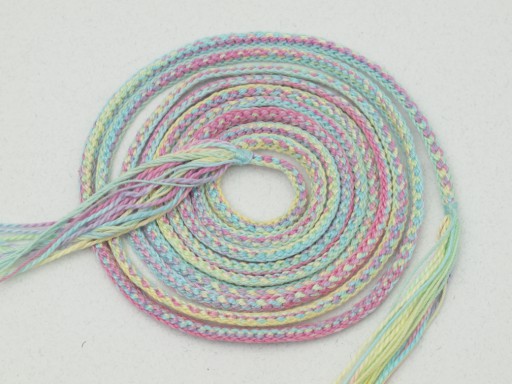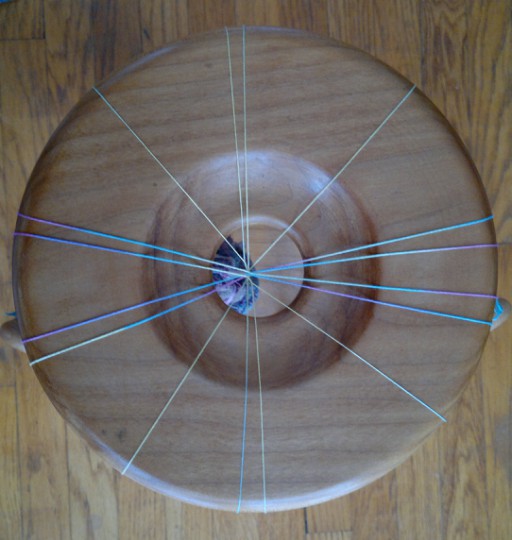Yesterday I featured a sample braid that explored various braid structures that used differing weights of fibers—8 tama with thicker threads than the other 8. I had a particular hank of threads in mind, that was very difficult to set up, so I actually made samples. But, of course, when it finally came time to make the ‘real’ braid, I couldn't locate the hank, so I used the pastel threads shown below instead. Unfortunately, their repeats were erratic, so I couldn't control the ikat (shifting color) effect very effectively.
Here are my notes for this braid:
- cuzza not finding blue and purple hank
- two weights of threads
- hand dyed #20? crochet cotton (no tag)
- anchor brand multicolor perl cotton #5 weight, color #1335 5g
- color on anchor (div coats&clark, made in germany) erratic
- so gave up trying to align colors. Just impossible
- started...1st or 2nd week of april 2012

59–60" long, not including tassels. Roughly 2x4mm in cross section.Completed in late Feb or early mar 2013...so it sat on the marudai for about a year[1]
This braid is made with two sets of threads, one much thicker than the other (say, #5 perle cotton versus 20# cordonnet). The thicker strands, if I'm recalling correctly, make up the square part of the braid; because there are two weights of cord, the ‘edges’ of the oval are ‘pointier’ (more acute in cross-section).

Note that this braid has asymmetrical sides...center color on ‘sides’ shows in midline ridge on obverse side.
Compared to the usual braid structure, the tabby keiruko no himo that I like to do, this was a more frustrating project. Below is a note for coping with the uneveness.

photographed 23feb13 with N8, to go along with the notes below. Um, sorry, picture is sideways (i.e. rotated 90 degrees clockwise): “north” is on the right edge of the image, south on the left.
Easter oval update: The way to lay out the marudai to keep the square and round braids separate is 2 tightly spaced pairs top and bottom for the square part; 1 tight pair east and west for round, and the other 4 distributed at ne, se, nw, sw. In this way, distance between two sets of threads can be maintained. (23feb13)
But when all was said and done, it was a pretty braid and I was happy with it—enough, in fact, to use the same structure for a stocking.
[1]Basically, till I needed to free up the marudai for another project. Which is, as I recall, what finally got me to finish the project before this one.
Unless otherwise noted, text, image and objects depicted therein copyright 1996--present sylvus tarn.
Sylvus Tarn